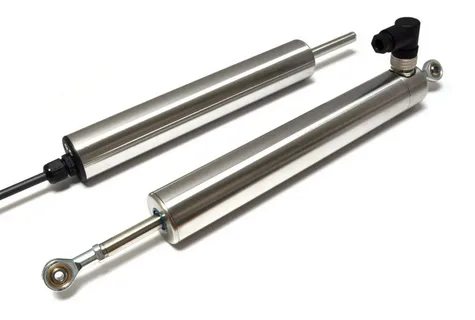Accurate readings from a linear position sensor are crucial for many applications across various industries. However, issues such as inconsistent measurements, drift, or signal noise can arise, leading to inaccurate data.
In this blog post, we will guide you through the troubleshooting and calibration process to ensure precise and reliable readings from your linear position sensor.
Let’s explore the common problems and their solutions.
Identifying Common Problems
Before diving into troubleshooting and calibration, it’s important to identify the potential problems that can affect the accuracy of your linear position sensor. Here are some common issues:
- Inconsistent Measurements: The sensor may provide varying readings even when the position remains constant, leading to data inconsistencies.
- Drift: Over time, the sensor’s output may deviate from the true position due to factors like temperature changes or aging.
- Signal Noise: Electrical interference or improper grounding can introduce noise into the sensor’s output, affecting the accuracy of the readings.
Troubleshooting Steps
To troubleshoot and resolve issues with your linear position sensor, follow these steps:
- Inspect Wiring Connections: Ensure that all wiring connections are secure and properly connected to the sensor and associated devices. Check for any loose connections, damaged cables, or incorrect wiring configurations.
- Verify Power Supply: Ensure that the power supply to the sensor is stable and within the specified voltage range. Fluctuations or inadequate power can result in unreliable readings.
- Check Grounding: Proper grounding is crucial to minimize electrical noise and interference. Verify that the sensor and related equipment are correctly grounded to a suitable earth ground.
- Inspect Mechanical Components: Examine the mechanical components associated with the linear position sensor, such as guide rails, actuators, or linkages. Look for any signs of misalignment, binding, or physical damage that may affect the sensor’s performance.
- Environmental Factors: Consider the impact of environmental conditions on the sensor’s accuracy. Temperature changes, humidity, or exposure to dust and debris can influence the readings. Ensure that the sensor is installed and protected according to the manufacturer’s recommendations.
Calibration Process
Calibration is a vital step to ensure accurate readings from your linear position sensor. Follow these guidelines for proper calibration:
- Reference Point: Identify a reference point or position against which you can compare the sensor’s readings. This can be a physical stop or a known position in your application.
- Zero Calibration: Perform a zero calibration to establish the sensor’s baseline reading when it is at the reference point. This process allows the sensor to compensate for any offset or bias.
- Full-Scale Calibration: Move the linear position sensor to its maximum or full-scale position. Adjust the sensor’s settings or calibration parameters to ensure the readings align accurately with the known position.
- Multiple Calibration Points: For enhanced accuracy, consider performing calibration at multiple positions along the linear range of the sensor. This helps compensate for any non-linearity or variations in the sensor’s response.
- Regular Maintenance: Schedule regular maintenance and recalibration intervals for your linear position sensor. This ensures continued accuracy and reliability over time.
Remember to consult the manufacturer’s documentation and guidelines specific to your linear position sensor for detailed instructions on troubleshooting and calibration procedures.
Conclusion
We hope this guide has provided you with valuable insights into troubleshooting and calibrating your linear position sensor accurately. By maintaining accurate readings, you can ensure optimal performance and reliability in your industrial processes and applications.

